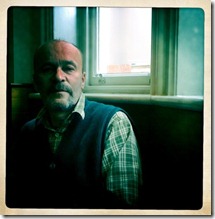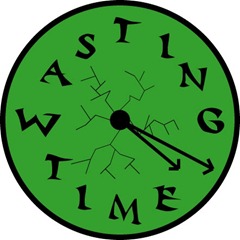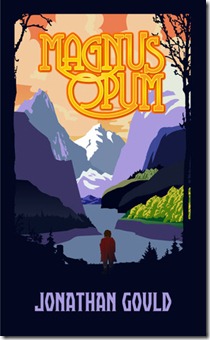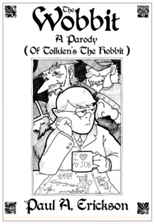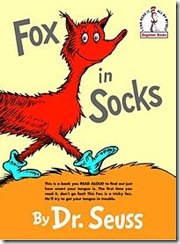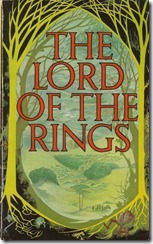Writers drink a lot. A lot of writers drink—it’s a bit of a cliché, the semi-(if not completely)-sozzled novelist—but I suspect that far more writers will be addicted to caffeine than alcohol. I don’t drink. Of course I drink. I just don’t drink-drink. I haven’t had an alcoholic beverage since… hang on I’m thinking… since my wife’s son came to visit. We popped into a bar on Great Western Road when I was out showing him around our great city or at least the parts of the great city that interested me—i.e. the shops—and we popped into whatever the name of the bar was (because I’ve no idea what the bar was and it’s probably been renamed three or four times since) and had a pint. At least I think I had a pint. I might have had a soft drink. But that was years ago. I was still working then so easily five years ago. Doesn’t time fly? Since I fell ill and started taking Pregabalin (as a reasonably effective treatment for Generalised Anxiety Disorder) I’ve never touched a drop. It’s been easily a couple of years since I came off the pills and, apart from my blood pressure medication (which I’m told I’ll be on forever—thanks Mum) I’m drug free but I’ve not started drinking.
Only I wasn’t drug free. Every day I was gulping down anything up to a dozen mugs of coffee. So that’s maybe 90-150 mg of caffeine per cup. It all adds up. There are side-effects to taking Pregabalin and one is weight gain at least that’s the effect it had on me; 10lbs when I first went off it and then another 10lbs when I tried to come off it the first time and had to go back on it. I wasn’t obese but I was overweight and so to lose the weight I went on a diet, the first diet of my life; up until the age of fifty I had been able to eat what I liked and hardly gained anything and what I did gain I walked off but that had all changed. Part of my diet involved not taking any sugar in my coffee and, at the same time, my wife thought it would be a good idea, bearing in mind how much of the stuff I swallowed in a day, to switch to decaffeinated; it was also time for the milk to go. And so in one foul swoop—why isn’t it ‘fowl swoop’? birds swoop—I switched from lovely, sweet, milky, soothing, coffee-tasting coffee to this bitter, mucky-looking liquid which was one step too far and so I started adding sweetener to it.
 I’d tried using artificial sweeteners before but never stuck with them. Nothing beats real sugar; Demerara preferably, at least in coffee. This time, though, I made more of an effort and so I dug my heels in and broke the habit of a lifetime. Yay me. Having lost the twenty pounds, I decided to stick with the alternative coffee drink; I’d got used to it. In the evenings I’d also got into the habit of drinking two classes of Coca Cola before bed: sugar-free, decaffeinated Coke—the real thing. And, as I’ve said, that’s been my habit for a long while now. Of course there are a variety of sweeteners on the market. I personally think there’s much of a muchness about them—they’re all pretty awful-tasting—but then I’ve never had what you might call ‘sensitive’ taste buds; the subtle flavours in a glass of red wine are lost on me and I couldn’t tell the difference between a Merlot or a Shiraz if my life depended on it. The containers arrived with the messages (that’s Scottish for ‘groceries’) and the spoonfuls went in my coffee cups, easily eight a day. The thing is there is a difference between sweeteners and it’s a BIG difference. The kind that comes in the tub with the red lid has been making me poorly and I never realised it.
I’d tried using artificial sweeteners before but never stuck with them. Nothing beats real sugar; Demerara preferably, at least in coffee. This time, though, I made more of an effort and so I dug my heels in and broke the habit of a lifetime. Yay me. Having lost the twenty pounds, I decided to stick with the alternative coffee drink; I’d got used to it. In the evenings I’d also got into the habit of drinking two classes of Coca Cola before bed: sugar-free, decaffeinated Coke—the real thing. And, as I’ve said, that’s been my habit for a long while now. Of course there are a variety of sweeteners on the market. I personally think there’s much of a muchness about them—they’re all pretty awful-tasting—but then I’ve never had what you might call ‘sensitive’ taste buds; the subtle flavours in a glass of red wine are lost on me and I couldn’t tell the difference between a Merlot or a Shiraz if my life depended on it. The containers arrived with the messages (that’s Scottish for ‘groceries’) and the spoonfuls went in my coffee cups, easily eight a day. The thing is there is a difference between sweeteners and it’s a BIG difference. The kind that comes in the tub with the red lid has been making me poorly and I never realised it.
When I fell ill about five years ago one of the major symptoms was brain fog, cognitive dysfunction to give it its Sunday name. It’s a common symptom of depression and anxiety and I’d experienced it before. You go to the docs, get a script for the pills, take the pills for a few months, stop stressing, wean yourself off the pills and life goes on. The thing about the brain fog was that I always regarded it as a symptom of a bigger problem: remove the stressors, remove the depression, remove the brain fog. It was logical, it made sense and it worked. And then, during the first week of December, guess what returned with a vengeance?
A phantom limb is the sensation that an amputated or missing limb (even an organ, like the appendix) is still attached to the body and is moving appropriately with other body parts. There are decent enough explanations for it. I’ve never suffered from it but I can imagine the confusion I might feel if I got an itch in the left foot that I no longer had. It would make no sense to me at all. There would need to be a leg there to get itchy and that’s how I felt about the brain fog. Where was the depression? Where were the stressors? And so I did what any amputee would, I imagined there was something there causing the fog when I could plainly see there was nothing. I had no stressors in my life. I wasn’t ill, I wasn’t in debt and I wasn’t addicted to anything. If anything, life was just plain rosy. I had just published my third novel (and dead proud I was about it, too) and then my wife went to America to visit her parents which she does every few months, so an annoyance but little more than that; I had work planned and had made a start when, a couple of days in, the brain fog returned with a vengeance. So I started looking for causal factors. Nothing happens for no reason. And, of course, I looked where I expected to find the problem. I looked for things that might be depressing me, things I might be upset about and stressing over and they were there. The thing is no one has a stress-free life. We talk about having one, dream about having one, might even think we have one but even deciding what we’re going to put on for tea is a cause of stress. But who said we were supposed to eliminate all stress from our lives? Isn’t the deal to learn to deal with stress before it becomes anxiety?
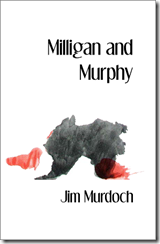 So I started to imagine what I might be stressing about: the fact that no one was offering to review Milligan and Murphy (okay, that has been getting to me but I know what it’s like when you start doing reviews and there’s no way you can say, “Yes,” to everyone); the fact that no one was buying Milligan and Murphy (but let’s be realistic, if no one’s reviewing it how are people going to know it’s available for purchase?); the fact that I felt pressured to start my next novel so I could tell people I was writing my next novel and was therefore a real writer and not some guy who just happened to write five novels but wasn’t really a real writer deep down; and, of course, as time started to go on and the fog started to get a grip I found other things to fret about like not being able to read or write and bit by bit I got worse and worse so that I couldn't tell you if I was coming or going or if I’d been and gone.
So I started to imagine what I might be stressing about: the fact that no one was offering to review Milligan and Murphy (okay, that has been getting to me but I know what it’s like when you start doing reviews and there’s no way you can say, “Yes,” to everyone); the fact that no one was buying Milligan and Murphy (but let’s be realistic, if no one’s reviewing it how are people going to know it’s available for purchase?); the fact that I felt pressured to start my next novel so I could tell people I was writing my next novel and was therefore a real writer and not some guy who just happened to write five novels but wasn’t really a real writer deep down; and, of course, as time started to go on and the fog started to get a grip I found other things to fret about like not being able to read or write and bit by bit I got worse and worse so that I couldn't tell you if I was coming or going or if I’d been and gone.
And then one day, and not for the first time I might add, I looked up ‘brain fog’ on the Internet and there was, as always, this whopping great big list of things that could cause brain fog—a list that would send House apoplexic—but this jumped out at me:
[E]arly 96, things started to go into what I call an "acute" phase for me personally. I began to have migraines two to three times a week. I had an "urgency to pee" that was really frustrating, infections were ruled out by my doctor. But the worst thing was, I began to experience an extreme case of "brain fog" which has been well documented as a symptom of aspartame poisoning (but I did not know this at the time). I felt exhausted 24/7, could barely get through the day, and felt like I was drugged, groggy, not able to concentrate. I would of course drink more diet coke to try to "wake up." I believed I was dying, actually, but no one was able to find anything wrong. The doctors started to treat me like a hypochondriac, and I was very worried.
At the time, I had a friend who had headaches from aspartame, and I always pooh-poohed her claim. I was so addicted to diet coke that I was in total denial that it could be the cause of my problems. She suggested I get off of all aspartame, which I was reluctant to do, because, after all, everyone said it was ok, and how could it possibly cause ALL these problems. No way! But after so many doctor visits with no help, I decided I had nothing to lose. I spent a lot of time wondering "what will I drink?" (a classic sign of addiction). But I did manage to quit, and amazingly enough, there was improvement. About 5 days after quitting, my family and I went on a camping trip over the weekend, and I ran out of drinks. Being not totally convinced yet, I drank two diet cokes on Saturday night, and woke up Sunday morning with the brain fog or grogginess. I knew then, that aspartame was responsible. – Debbie, Google Answers
I thought: What the hell? By this time I was about ready to go back to the doctor and try something, anything. My fear—a not unreasonable one—was that he would jump to the obvious conclusion based on my history and psychologise the problem; I don’t think he was ever one in favour of the chemical-imbalance-in-the-brain school of thought. So I stopped putting the sweetener in my coffee and I stopped drinking the Diet Coke. I’m writing this a week later but the change was visible the very next day. My wife came back from the States a few days ago, said the difference was noticeable and then started testing my mental acuity which she was pleased to see was perceptibly sharper, although my hearing had not improved (but then neither had her mumbling).
So why am I telling you all about this? Well, first and foremost, because if there are any of you out there using artificial sweeteners, do seriously step back and think just how clear-headed you really are. No two of us are the same. I can get drunk off wine gums but both my brother and sister have a high tolerance for alcohol. In general I don’t handle drugs well and it’s just as well I don’t have to take many of them. When I fell into my first depression at about the age of twenty-four I had no idea what was going on with me and it’s only now, almost thirty years and four breakdowns later, that I have a handle on what’s normal for me. The brain fog that came with the depressions was of a certain kind but the one that descended when I started taking the aspartame was nothing less than a pea-souper. Over the last six months I have lost so much time, time I will never get back. I’ve written most of my novels whilst depressed. It’s a rotten thing to experience but it can be worked through. This recent brain fog was like nothing I have ever experienced; completely debilitating. Did I mention the headaches by the way? Again I think I’ve had a constant headache for the last six months. So many things can cause headaches and since I have a lot of neck and back pain anyway (which I keep intending to get seen to but never get round to) I assumed the headaches were all my own fault, took two paracetamol, and soldiered on. An “urgency to pee” is not something I especially noticed but I do tend to urinate a lot, whenever I have the slightest urge and, as I drink so much, I’ve never considered that a symptom of anything worse than a full bladder.
There is a lot about aspartame online. I have no idea how much of it is true, but there is usually no smoke without fire. Wikipedia has an entire article devoted to the aspartame controversy which begins:
 The artificial sweetener aspartame has been the subject of several controversies since its initial approval by the U.S. Food and Drug Administration (FDA) in 1974. The FDA approval of aspartame was highly contested, with critics alleging that the quality of the initial research supporting its safety was inadequate and flawed and that conflicts of interest marred the approval of aspartame. […] [C]ritics such as activist Betty Martini have promoted undocumented claims that numerous health risks (such as multiple sclerosis, systemic lupus, methanol toxicity, blindness, spasms, shooting pains, seizures, headaches, depression, anxiety, memory loss, birth defects and death) are associated with the consumption of aspartame in normal doses.
The artificial sweetener aspartame has been the subject of several controversies since its initial approval by the U.S. Food and Drug Administration (FDA) in 1974. The FDA approval of aspartame was highly contested, with critics alleging that the quality of the initial research supporting its safety was inadequate and flawed and that conflicts of interest marred the approval of aspartame. […] [C]ritics such as activist Betty Martini have promoted undocumented claims that numerous health risks (such as multiple sclerosis, systemic lupus, methanol toxicity, blindness, spasms, shooting pains, seizures, headaches, depression, anxiety, memory loss, birth defects and death) are associated with the consumption of aspartame in normal doses.
Publicity of this controversy has been spread through an elaborate health scare and "Internet smear campaign" involving hoax e-mails repeating Betty Martini's widely circulated conspiracy theory. Her undocumented claims are still repeated by thousands of self-published Web sites.
Before last week I knew nothing about any of that. All I knew was my wife said that the sweetener with the red lid wasn’t as good as the one with the yellow lid so we bought the one with the yellow lid until they ran out and then, being a frugal (i.e. penny-pinching) Scot I said just buy the red one: “I mean how bad can it be?”
Bad. It can be bad.
I’ve read some of the articles about the sweetener and I find it hard to believe that any chemical could produce all the negative side-effects that people claim—aspartame could not be the cause of nearly every illness out there—and the efforts to which some people have gone to harm the reputation of the product have done as much to discredit themselves which is a shame. I can only speak for myself. So no links to the vast number of sensational claims. It was a spur of the moment decision for me and it worked. It might help you too. Normal is something we all aspire to. None of us really know what normal is, though. We have an inkling what normal-for-us might be but even then that doesn’t mean that we should settle for that just because it’s familiar.
I have no axe to grind. I’m not going to sue James Schlatter who discovered aspartame back in 1965 or G.D. Searle Company, the company he was working with, or the person who first approved it for use in dry goods in 1974 or the one who approved it for use in carbonated beverages in 1983. I’m not even going to write my MP or picket Tesco demanding they stop stocking products that include it in their ingredients. I don’t have time for any of that. I’m simply going to stop ingesting the stuff. And so is my wife. Carrie poured three large bottles of Coke down the sink yesterday and when I get a minute the sweetener is going in the bin too. And I’m going to get on with my work. Finally. And with a clear head.
***
Editorial note:
The sweeteners of the yellow and red lids to which Jim refers are products containing sucralose and aspartame. While most of the bad press has been garnered by products containing aspartame (e.g. NutraSweet, Equal, Canderel), there are also many claims of problems associated with the ‘yellow lid’ products containing the chlorinated sugar sucralose (e.g. Splenda). If you have an interest you will find hundreds of articles about both. It is difficult to trust the information published to counter these claims since the products are in widespread use and very lucrative. I would like to refer you to an article published by the European Commission's Directorate General for Health and Consumer Protection entitled Opinion of the Scientific Committee on Food: Update on the Safety of Aspartame. While its conclusions do not support the broad body of anecdotal evidence against aspartame, there is enough information in the opinion to make one think hard and long about what you are putting into your bodies. Also not using any kind of sweeteners (and salt sources) opens up a whole new world of taste experience.

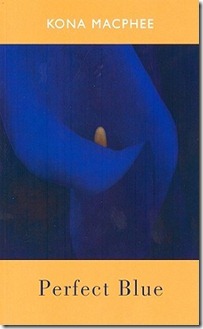
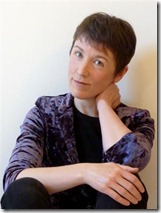




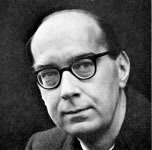

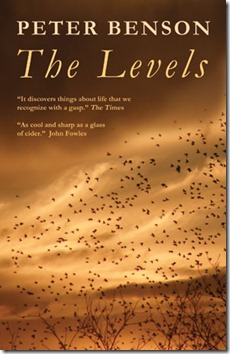
![Two Cows and a Vanful of Smoke[3] Two Cows and a Vanful of Smoke[3]](http://lh4.ggpht.com/-sCrYIYVK0nM/T6Fq0r7M6sI/AAAAAAAAFDI/uUw3r36cEFw/Two%252520Cows%252520and%252520a%252520Vanful%252520of%252520Smoke%25255B3%25255D_thumb.jpg?imgmax=800)

